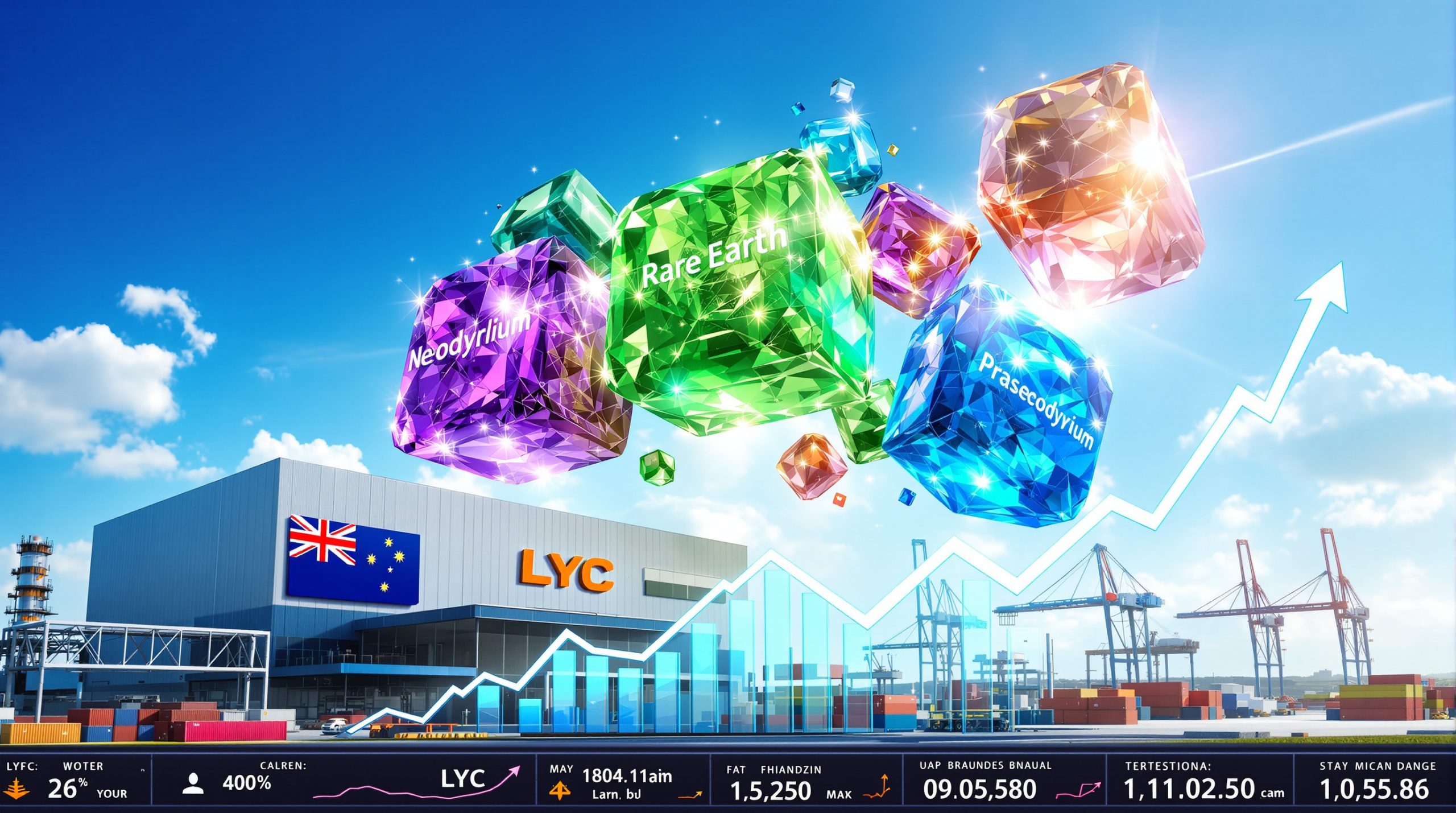What is Happening with Cobalt Sulphate Prices?
The cobalt sulphate market has entered a period of notable price stabilization, with market transaction prices for new goods consistently holding between 50,000-52,000 yuan per metric ton in recent trading sessions. This stability represents a significant development following historical volatility in the cobalt sector. According to Shanghai Metal Market (SMM) data from July 2025, no transactions above this range have been reported by market participants, suggesting a temporary ceiling has formed.
Downstream purchase intention prices have settled into a narrower band of 46,000-47,000 yuan per metric ton, with a clear psychological resistance point emerging at the 47,000 yuan threshold. When prices approach or exceed this level, buyer hesitation becomes immediately apparent across multiple sectors.
"The current price stabilization reflects a delicate equilibrium between supplier discipline and selective downstream demand, creating a temporarily sustainable price environment despite underlying market tensions." – SMM Research Team, July 2025
The variance between new goods pricing and limited old stock availability has created a two-tier market dynamic. While new production commands premium pricing due to elevated production costs, some traders with remaining old inventory (acquired at lower historical costs) provide limited flexibility at the margins of the market.
Key Price Indicators and Metrics
Several critical metrics are shaping the current cobalt sulphate landscape:
- Spot Market Pricing Range: 50,000-52,000 yuan/mt for new production
- Downstream Purchase Intention: 46,000-47,000 yuan/mt
- Price Resistance Threshold: 47,000+ yuan/mt triggers significant buyer resistance
- Old Inventory Premium Discount: 2-3% below new production prices
Industry analysts note that while daily price volatility has decreased by approximately 65% compared to Q1 2025 levels, the underlying cost pressures from raw material inputs continue to build, suggesting this stability may be temporary without corresponding improvement in demand fundamentals.
Why Are Cobalt Sulphate Prices Stabilizing?
The current price stabilization in cobalt sulphate markets stems from a careful balance of supply discipline and fragmented demand patterns. This equilibrium, while potentially temporary, provides important insights into both producer economics and downstream market conditions.
Supply-Side Factors
The production side of the equation reveals significant discipline among smelters, with virtually all producers maintaining firm pricing positions despite soft demand in certain sectors. According to SMM's supply chain survey, this stance is driven primarily by production economics rather than market optimism.
Key supply factors include:
- Raw Material Cost Inflation: Cobalt intermediates have seen gradual price increases throughout Q2 2025
- Limited Inventory Availability: Traders report historically low old-stock inventory levels
- Smelter Margin Protection: After experiencing negative margins in late 2024, producers prioritize price integrity over volume
- Production Curtailment: Several secondary producers have reduced operating rates rather than sell below cost
One technical factor supporting prices is the rising cost curve for cobalt hydroxide processing. With sulphuric acid costs increasing 8% year-over-year and energy inputs facing similar inflation, the production floor price has steadily climbed, creating natural support levels.
Demand-Side Dynamics
The demand landscape for cobalt sulphate shows remarkable divergence across application sectors:
Ternary Cathode Precursor Segment:
- Maintains cautious purchasing behavior
- Continues inventory digestion from previous overbuying cycles
- Shows price sensitivity above 47,000 yuan/mt threshold
- Reports minimal new order growth from end-users
Cobalt Tetroxide and Traditional Chemical Enterprises:
- Demonstrate more consistent purchasing activity
- Report better economic performance metrics
- Maintain regular production schedules requiring consistent material flow
- Show less price sensitivity than battery materials segment
Refined Cobalt Sector:
- Has largely suspended purchasing activities
- Faces significant economic viability challenges
- Reports negative processing margins at current price levels
- Awaits either input cost reduction or output price increases before resuming normal procurement
"The demand bifurcation we're witnessing reflects the broader economic restructuring occurring across cobalt-consuming industries, with traditional applications showing more resilience than newer battery technologies in the current cycle." – SMM Cobalt Market Analysis, July 2025
Which Downstream Sectors Are Driving Cobalt Sulphate Demand?
Understanding sectoral demand patterns provides crucial context for the current cobalt sulphate market dynamics. Each downstream segment presents unique characteristics that collectively shape market behavior.
Ternary Cathode Materials Segment
The ternary cathode materials sector, representing approximately 65% of total cobalt sulphate consumption, currently exhibits minimal growth in new orders. This crucial segment has adopted a distinctly cautious approach characterized by:
- Inventory Optimization: Actively working through existing material stockpiles
- Wait-and-See Purchasing: Delaying commitments until clearer demand signals emerge
- Price Resistance: Strong pushback against offers exceeding 47,000 yuan/mt
- Production Rate Adjustments: Operating below capacity to match weaker end-demand
The sector's purchasing restraint stems from multiple factors, including elevated inventory-to-production ratios (currently averaging 1.8 months of coverage versus the historical norm of 1.2 months) and uncertain electric vehicle sales projections for Q3-Q4 2025.
Cobalt Tetroxide and Traditional Chemical Enterprises
In contrast to the battery materials segment, cobalt tetroxide (Co₃O₄) producers and traditional chemical enterprises demonstrate notably healthier demand fundamentals:
Active Purchasing Behavior:
- Maintaining regular procurement schedules
- Demonstrating less price sensitivity
- Reporting better capacity utilization rates
- Supporting consistent material flow through the supply chain
These sectors benefit from more diverse end-use applications including ceramics, pigments, catalysts, and specialty glass manufacturing. Their relative economic resilience stems partly from lower substitution risks and more stable end-market demand patterns.
Refined Cobalt Segment
The refined cobalt segment presents the weakest demand profile among downstream sectors:
- Suspended Purchasing: Nearly complete halt in new material acquisition
- Economic Viability Challenges: Negative processing margins at current price levels
- Cost-Benefit Imbalance: Input costs exceeding output values by approximately 5-8%
- Recovery Timeline Uncertainty: No clear indicators for when procurement might resume
This segment's challenges highlight the broader cobalt mining production market's complex price relationships between raw materials, intermediates, and finished products, with temporary disconnects creating processing margin compression.
"The divergent demand patterns we're observing across downstream sectors reveal how application-specific economics can override general market sentiment in determining purchasing behavior." – SMM Industry Analyst, July 2025
What Are the Short-Term Market Projections for Cobalt Sulphate?
The near-term outlook for cobalt sulphate suggests continued price stability with potential for modest strengthening, though several key variables merit close monitoring.
Price Trend Expectations
Market analysts anticipate the following price trajectory for cobalt sulphate over the coming 4-6 weeks:
- Baseline Scenario: Continued stability in the 50,000-52,000 yuan/mt range for new production
- Upside Potential: Gradual strengthening possible toward 53,000-54,000 yuan/mt if raw material costs continue rising
- Resistance Levels: Strong psychological and economic resistance at 55,000 yuan/mt
- Downside Protection: Limited probability of prices falling below 48,000 yuan/mt given production economics
This projected stability reflects the ongoing balance between cost-push pressures and selective demand restraint. The price floor appears well-supported by production economics, while the ceiling remains constrained by downstream purchasing power.
Key supporting factors include:
- Rising cobalt intermediate costs providing upward pressure
- Smelter discipline in maintaining price integrity
- Limited old inventory availability to undercut market pricing
- Selective but consistent demand from traditional chemical sectors
Factors to Monitor
Several critical indicators will determine whether the market maintains its current equilibrium or shifts direction:
Demand Recovery Signals:
- Ternary precursor order books (early indicator)
- Electric vehicle production schedules for Q4 2025
- Inventory reduction progress across the supply chain
- Export orders for battery materials
Supply-Side Developments:
- Raw material cost trajectories
- Smelter operating rate adjustments
- New capacity commissioning timelines
- Potential production curtailments if margins compress further
Macroeconomic Influences:
- Currency fluctuations affecting import economics
- Energy cost developments impacting production economics
- Potential regulatory shifts affecting cobalt logistics or processing
"While we expect the strong price trend to continue in the immediate term, the market remains highly responsive to signals from downstream ternary demand. Any substantive improvement there could quickly accelerate price movements." – SMM Market Analysis, July 2025
How Does the Current Market Compare to Previous Periods?
Contextualizing today's cobalt sulphate market against historical patterns provides valuable perspective on both current conditions and potential future developments.
Week-over-Week Market Comparison
The current market shows remarkable consistency with conditions observed the previous week, suggesting a period of temporary equilibrium rather than dynamic change:
- Price Stability: Minimal variation in daily transaction prices
- Demand Patterns: Consistent purchasing behavior across all major sectors
- Supply Discipline: Unchanged producer pricing strategies
- Inventory Levels: Marginal week-over-week changes in reported stocks
This short-term stability represents a departure from the more volatile patterns observed earlier in 2025, when price movements of 2-3% within a single week were not uncommon.
Historical Context and Seasonal Factors
When examining longer timeframes, several important contextual elements emerge:
Comparison to Previous Year:
- Current prices approximately 8% higher than July 2024
- Transaction volumes down approximately 12-15% year-over-year
- More pronounced sectoral demand divergence than historical norms
- Greater supply-side discipline than typical mid-year patterns
Seasonal Considerations:
- Q3 typically sees moderate demand weakening in normal years
- Pre-holiday stocking usually begins in late Q3, not yet evident
- Raw material cost inflation unusual for mid-summer period
- Inventory patterns showing atypical digestion phase duration
Structural Market Evolution:
- Greater price correlation with raw material costs than historical patterns
- Reduced speculative positioning compared to previous cycles
- Increased production discipline from major suppliers
- More pronounced divergence between battery and traditional applications
These comparisons suggest the current market represents not merely a cyclical phase but potentially a structural evolution in how cobalt sulphate prices form and respond to fundamental factors.
What Should Market Participants Watch for Next?
Strategic positioning in the cobalt sulphate market requires careful attention to several key indicators and developments that could signal directional shifts.
Key Indicators for Market Direction
Market participants should monitor these critical indicators to anticipate potential changes:
Demand Recovery Signals:
- Ternary Precursor Orders: Early indicator of battery sector recovery
- EV Production Schedules: Particularly for Q4 2025 and Q1 2026 models
- Material Qualification Cycles: New projects entering sampling phases
- Battery Production Utilization Rates: Direct driver of precursor demand
Supply Chain Metrics:
- Smelter Operating Rates: Currently averaging 65-70% of capacity
- Inventory-to-Consumption Ratios: Currently elevated at 1.8 months
- Raw Material Arrival Schedules: Particularly hydroxide shipments
- Maintenance Schedules: Planned downtime at major producers
Cost Structure Developments:
- Sulphuric Acid Pricing: Key production input showing inflationary trend
- Energy Cost Trajectories: Critical for electrochemical processes
- Logistics Expense Changes: Particularly for imported materials
- Currency Effects: Exchange rate impacts on imported precursors
"The next inflection point for cobalt sulphate will likely emerge from downstream ternary demand patterns rather than supply-side developments. Watch precursor order books as the leading indicator." – SMM Analyst, July 2025
Strategic Considerations for Market Participants
Different market participants face unique strategic imperatives in the current environment:
For Material Buyers:
- Develop tiered purchasing strategies with volume flexibility
- Consider lengthening contract durations at current stable prices
- Explore index-based pricing mechanisms for longer commitments
- Maintain sufficient inventory to avoid spot exposure if prices strengthen
For Material Producers:
- Sustain pricing discipline through the demand trough
- Optimize production scheduling to match profitable demand
- Consider strategic maintenance during periods of weakest demand
- Evaluate contract structures to balance volume certainty with price flexibility
For Traders and Intermediaries:
- Focus on value-added services during periods of price stability
- Develop arbitrage strategies between material grades and forms
- Provide inventory financing solutions during customer hesitation periods
- Explore regional arbitrage opportunities given logistics constraints
The optimal strategy ultimately depends on individual positioning within the supply chain, inventory levels, cash flow requirements, and risk tolerance.
Frequently Asked Questions About Cobalt Sulphate Prices
What factors are currently supporting cobalt sulphate prices?
Several key factors maintain price support despite selective demand weakness:
- Production Economics: Rising raw material costs create a natural price floor
- Smelter Discipline: Producers maintaining pricing integrity rather than chasing volume
- Limited Old Inventory: Minimal availability of lower-cost material to undercut market
- Selective Demand Strength: Particularly from cobalt tetroxide and traditional chemical sectors
- Technical Cost Floor: Energy, acid, and labor inflation creating minimum viable production costs
The combination of these factors has created sufficient support to maintain price stability despite the absence of robust demand growth across all sectors.
Why are some downstream sectors showing better demand than others?
The demand divergence across downstream applications stems from several structural factors:
Cobalt Tetroxide and Traditional Chemicals (Stronger Demand):
- More diverse end-use applications reducing single-sector risk
- Generally higher margins in specialty applications
- More stable end-product demand with less inventory volatility
- Lower substitution risk due to technical performance requirements
- Typically smaller production scales with greater nimbleness
Ternary Cathode Materials (Weaker Demand):
- High inventory levels from previous overbuying cycles
- Uncertain electric vehicle sales projections affecting production planning
- Intense cost pressure from battery manufacturers
- Ongoing cathode chemistry evolution (reduced cobalt formulations)
- Larger production scales requiring more cautious inventory management
Refined Cobalt (Weakest Demand):
- Severe margin compression due to raw material/product price relationship
- Highly price-sensitive applications allowing substitution
- Limited production flexibility due to process constraints
- Greater international competition in refined products
These structural differences explain why certain applications maintain purchasing activities while others exhibit greater restraint.
When might ternary cathode precursor demand improve?
Several indicators and timeframes are worth monitoring for potential demand recovery:
Early Indicators of Improvement:
- Increasing sample qualification requests (typically 6-8 weeks before production)
- Rising utilization rates at major battery cell manufacturers
- Declining precursor inventory-to-production ratios
- Acceleration in electric vehicle order rates
Potential Timeline Considerations:
- Inventory normalization expected to complete by late Q3 2025
- New model production ramp-ups typically begin 4-6 months before release
- Year-end sales promotions typically drive Q4 production increases
- Seasonal production planning typically finalizes by early September
Structural Factors Affecting Recovery:
- Battery chemistry evolution may permanently alter cobalt intensity
- Production regionalization creating more localized demand patterns
- Evolving stockpiling strategies following recent market volatility
- Raw material qualification cycles affecting sourcing flexibility
"The recovery in ternary demand will likely follow a progressive pattern rather than a sudden rebound, with initial sampling leading to pilot production before full-scale procurement resumes." – SMM Battery Materials Analysis, July 2025
How might raw material costs influence future price movements?
Raw material costs represent the primary upward pressure mechanism for cobalt sulphate prices stabilised, with several dynamics worth understanding:
Direct Cost Relationships:
- Cobalt hydroxide as primary input (approximately 75-80% of production cost)
- Sulphuric acid (8-10% of production cost, showing 8% YoY inflation)
- Energy inputs (7-9% of production cost, varying by region)
- Labor and other overhead (5-7% of production cost)
Transmission Mechanism:
- Hydroxide price increases typically appear in sulphate prices within 3-4 weeks
- Cost pass-through ability varies by producer market position
- Contract structures determine timing of cost impact (spot vs. formula)
- Regional production costs create "arbitrage ceilings" limiting excessive increases
Strategic Implications:
- Rising raw material costs create natural price floor for sulphate
- Cost trajectory more important than absolute level for price formation
- Regional cost differentials determine import/export competitiveness
- Integrated producers (controlling upstream materials) gain advantage during inflation
Understanding these cost relationships provides crucial context for anticipating both the direction and magnitude of potential price movements as underlying inputs evolve.
Additional Market Insights on Cobalt Sulphate
Global Supply Chain Considerations
The cobalt sulphate market exists within a complex global supply network with several unique characteristics affecting price formation:
- Geographic Concentration: Approximately 70% of cob
Ready to Stay Ahead of Major Mineral Discoveries?
Discover why significant mineral finds can lead to exceptional market returns by exploring Discovery Alert's dedicated discoveries page, where our proprietary Discovery IQ model transforms complex mineral data into actionable investment insights. Begin your 30-day free trial today to receive real-time alerts on potential market-moving ASX mineral discoveries before the broader market reacts.




